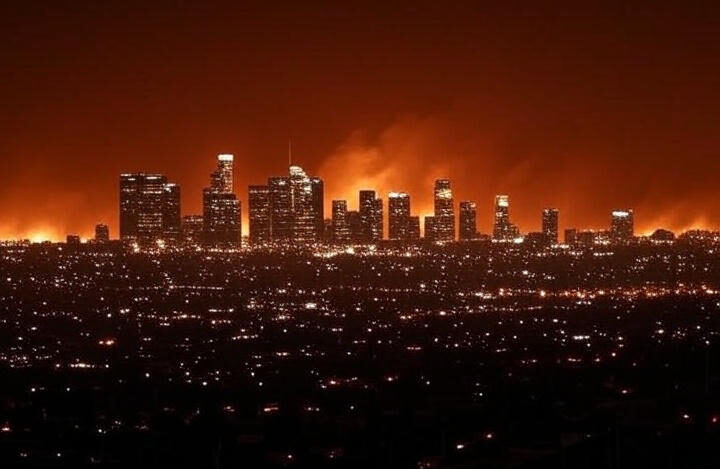Overview: A Quiet Tragedy Unveiled
In January 2025, Los Angeles County endured two catastrophic wildfires the Eaton Fire in Altadena and the Palisades Fire along the coast that officially claimed 31 lives. However, a new study published in JAMA reveals a much grimmer reality: approximately 440 excess deaths occurred between January 5 and February 1, far exceeding the reported fatality count (Reuters, The Washington Post).
By comparing death records during the wildfire period (6,371 deaths) against historical norms (an expected 5,931), researchers uncovered a 6.9% increase in mortality (Los Angeles Times, The Washington Post, Reuters).
Causes Behind the Excess Deaths
According to lead researcher Andrew Stokes of Boston University, these additional fatalities likely reflect a range of indirect impacts:
- Toxic smoke exposure, particularly harmful to individuals with heart and lung conditions(Globedge).
- Disruptions in healthcare such as delayed treatments, interrupted chronic care, and accessibility issues.
- Stress and mental health crises, compounded by evacuation and environmental trauma (Reuters, SFGATE, CBS News, KESQ).
This “excess deaths” approach has been used previously in other disasters to better understand the full human cost when fatalities aren’t immediately obvious (The Washington Post, Reuters).
Insights and Limitations
- Underreporting Prevalent
Official numbers typically capture only direct deaths burn injuries or on-scene fatalities failing to consider the longer term or indirect effects of disasters (Los Angeles Times, The Washington Post). - Populations Most Affected
Older adults were particularly vulnerable, facing mobility challenges, chronic health issues, and difficulties accessing care during the disaster (SFGATE, CBS News). - Geographic Inequities
The impact wasn’t uniform. Altadena a middle class, diverse area suffered more deaths than the Pacific Palisades, a wealthier neighborhood (SFGATE). - Preliminary Data & Future Toll
The study focused only on the initial wildfire period; longer term health effects and additional fatalities beyond February 1 remain uncounted (The Washington Post, CBS News, Reuters).

Broader Implications: Health, Climate, and Preparedness
- Beyond Visible Flames
These findings underscore that wildfires are not just environmental disasters they’re major public health emergencies whose consequences ripple well beyond the initial event. - Climate Disaster Consequences
With climate change driving increased wildfire frequency and severity (via drought, amplified winds, and dried fuels), the human toll is only expected to grow (Wikipedia). - Rethinking Emergency Response
Accurate death estimates and inclusive disaster planning can guide better preparedness, resource allocation, and equitable recovery especially in dense urban environments like Los Angeles.
In Summary
A new analysis of the January 2025 Los Angeles wildfires reveals that approximately 440 excess deaths beyond the 31 officially recorded occurred in the aftermath. These fatalities largely stem from smoke related health effects and healthcare disruption. This insight sheds light on the often invisible toll of climate-related disasters, highlighting the urgent need for comprehensive health surveillance and resilient emergency response systems in our warming world.

